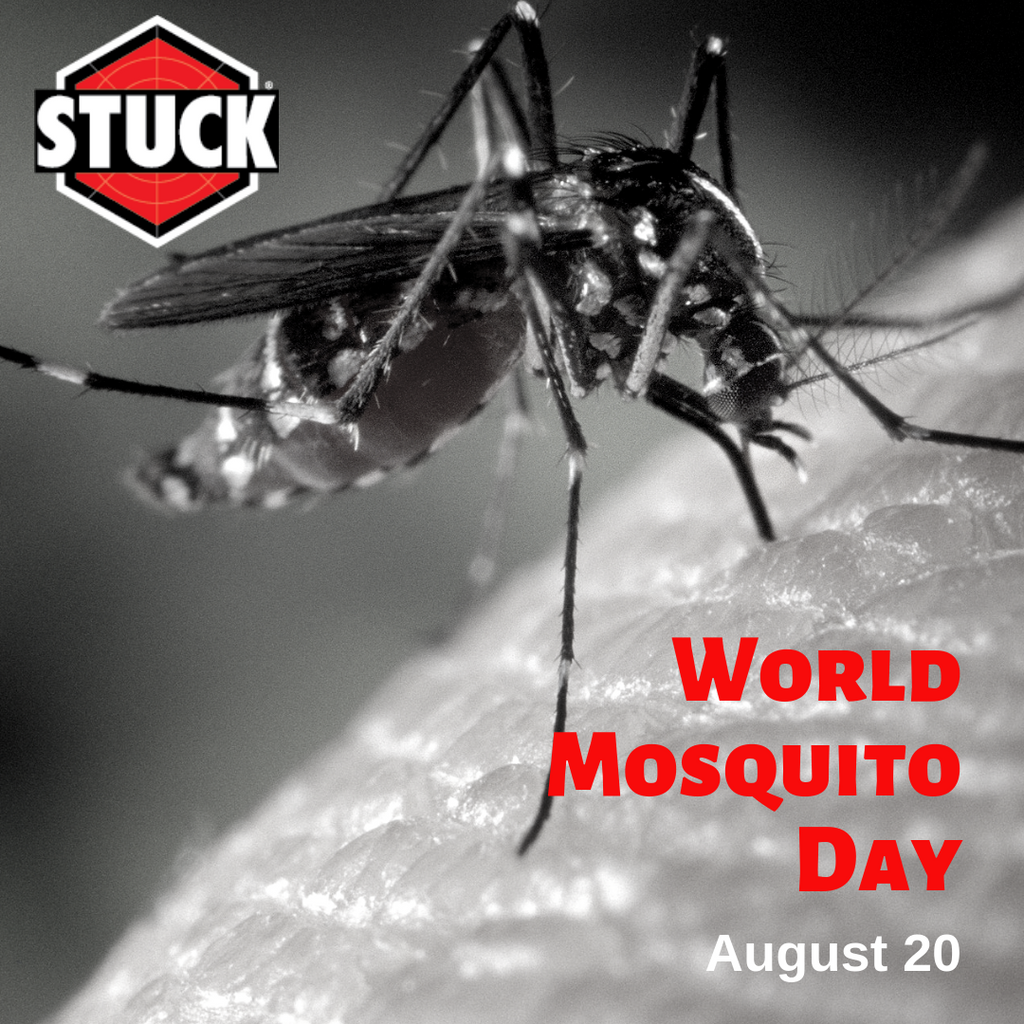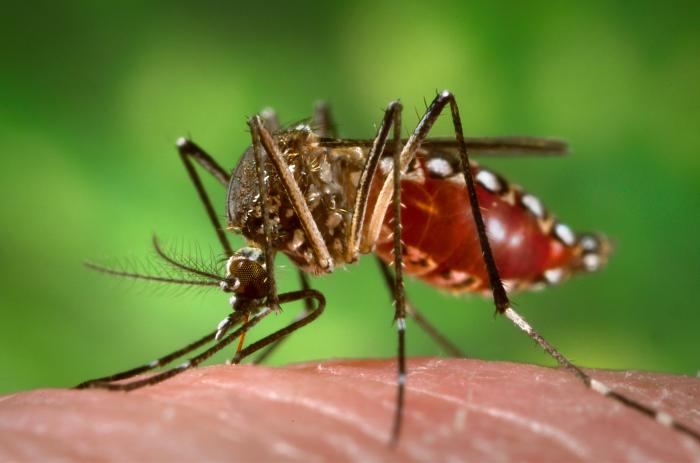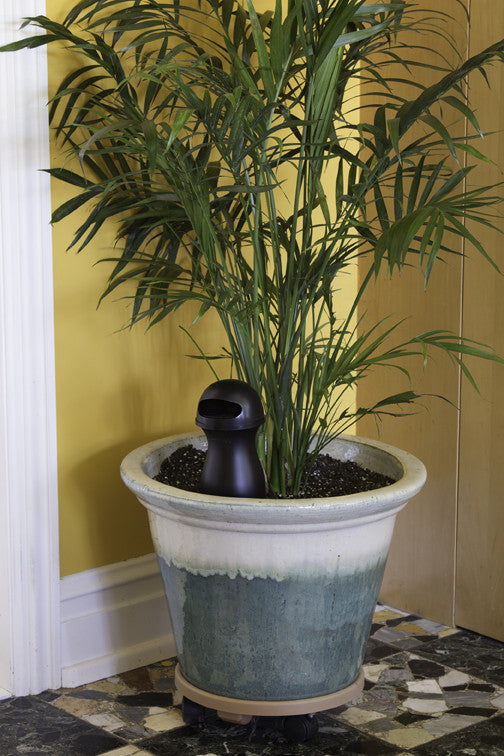STUCK Blog
World Mosquito Day and Vector Control
World Mosquito Day, held on August 20th, is a day set in commemoration of doctor Sir Ronald Ross. In 1897, Sir Ronald Ross had discovered that female mosquitoes are the culprit of transmitting malaria between humans. Shortly after this discovery, Sir Ronald Ross declared the annual observance of World Mosquito Day.
For two decades, Ross, and other doctors from various countries, researched malaria transmission and the effects on human biology. Ross has come to discover, and prove, in 1897 that Anopheles mosquitoes would be the culprit carrier of Malaria. Ross had also noted that practical measures could help prevent mosquito bites and control the mosquito population; this is known as vector control.
The Importance of Vector Control
Mosquitoes cause risk to human health. Being the number one deadliest creature, mosquitoes have the capability of transmitting various diseases, such as: Dengue Fever, Yellow Fever, Chikungunya, Zika Virus, West Nile Virus and Malaria. The vector potential of mosquitoes comes from the female mosquito (due to it's bloodsucking nature). A female mosquito must first infect itself by sucking blood from it's source before transmitting disease to another victim; because of this, the mosquito must be controlled.
Mosquito-Borne Illnesses and Mosquito Control

Image Source: www.rentokil.com
With 3.2 billion people at risk of Malaria, the need for mosquito control is at an all time high. North America, as you can see on the above image, has roughly 30,000 cases of West Nile Virus per year. South East Asia and many tropical areas are more susceptible to Malaria, which has about 207 million cases per year.
With the expansion of urbanization, climate change, and current agricultural practices, mosquitoes and mosquito-borne illnesses are increasing rapidly. Let's take a look at how we can prevent mosquitoes in our area.
Preventing Mosquito Bites
Other than being annoying an itchy, mosquito bites can spread viruses, cause disease, and make you sick. Mosquitoes bite during the day and night, live indoors and outdoors, and like to breed near stagnant water. Read the 10 Common Mosquito Breeding Sites Around Your Home >>
So, what can you do to help prevent these bites?
1. Use Insect Repellent. The CDC recommends using an EPA-registered insect reppelent that has one of the following active ingredients: DEET, Picardin, IR3535, Oil of Lemon Eucalyptus, Para-Menthane-Diol, 2-undecanone.
2. Cover Up. When hiking and being outdoors for extended periods of time, try wearing long-sleeved shirt and long pants.
3. Keep Mosquitoes Outside. Use air conditioning, window screens, and door screens. If this is something you can't do, try sleeping under a mosquito bed net.
4. Use Mosquito Traps. The STUCK Mosquito Traps are designed to attract female and male mosquitoes to a stagnant water source. They find our traps to be the perfect environment for shelter or to deposit eggs. Our traps are simple, effective and easy-to-use. The trap operates without the use of pesticides, harmful chemicals, or electricity. Simply put, we've created something that mosquitoes are naturally attracted to, so all you have to do is add water and let the trap do the work.
Sources
https://www.malarianomore.org.uk/world-mosquito-day
https://www.gov.uk/government/news/world-mosquito-day-2010
https://www.pmi.gov/news/all/news-full-view/world-mosquito-day---2016
https://www.cdc.gov/chikungunya/pdfs/fs_mosquito_bite_prevention_us.pdf
https://www.rentokil.com/events/world-mosquito-day/
10 Common Mosquito Breeding Sites Around Your Home
You should not have to spend your days thinking about mosquitoes. Then again, every year you are reminded of this pesky insect who ruins the comforts of the outdoors and keeps you prisoner to the confines of your home. So instead of letting mosquitoes impose on your day-to-day, be proactive and limit the number of mosquito breeding sites around your property. Check out the list of 10 Common Mosquito Breeding Sites Around Your Home and see what you can do about them!
1. Tires
These heavy recycled rubber objects are a staple for a variety of home uses in North, Central, and South America acting as swing sets, home planters, and even make for safe self-standing walls and barriers. Sadly, they hold water and are the perfect mosquito breeding site in your yard. We suggest emptying tires weekly or moving them to a location where they are covered and can no longer collect rainwater.

Photo Credit: https://upload.wikimedia.org/wikipedia/commons/a/af/Used_tires.jpg
2. Swimming Pools- Big & Small
The sun is out and the temperature is rising, it’s time to break out the pool! Pools are great outdoor accessories, just be weary that on long vacations or at the close of the season that your pools are emptied. If improperly looked after, these sites can become host to tens of thousands of mosquitoes, so be sure to empty your pools as soon as possible.

Photo Credit: https://upload.wikimedia.org/wikipedia/commons/f/f2/Kids.jpg
3. Garbage Cans & Recycling Bins
While most outdoor garbage cans have lids, many recycling bins do not. When left outside the recycling bin is a great catch basin for rainwater. Keep an eye on your trash and recycling bins by leaving them under overhangs or remembering to empty them after a major rainstorm.

Photo Credit: https://en.wikipedia.org/wiki/Recycling_bin#/media/File:Dunedin_recycling_bins_2008.jpg
4. Clogged Gutters & Runoff
Pull out your ladder because your clogged gutters are a mosquitoes favorite place to hide out and breed without you even knowing it! The runoff from poorly designed gutters or blocked drains can create new breeding sites for mosquitoes. Inspect rooftops for blockages that can cause gutter water to stagnate and keep those drains free of debris.

Photo Credit:http://801website.com/hicaliber/home-inspection/clogged-rain-gutters-in-saint-george/
5. Swing Sets and Toys
Sand buckets, plastic toys, and swing sets can become prime real estate for the breeding mosquito. Swing sets can hold a small amount of water especially when not used regularly, and can add to a new plethora of mosquitoes in your yard. Sand buckets easily capture stagnant water, while toys have little inconspicuous crevices that turn a kid friendly toy into your biggest backyard threat. Maintain good habits by turning toys, sand buckets, and even swing set accessories upside-down when you are done using them. This will often prevent any unforeseen pockets of standing water from arising and keep your back yard safe from breeding mosquitoes.

Photo Credit: https://en.wikipedia.org/wiki/Outdoor_playset#/media/File:Outdoor_playset.jpg
6. Oil Drums & Buckets
Items such as 5 gallon buckets that often hold yard tools, rags, and other outdoor work accessories gather water the same as any sand bucket. Empty these regularly and tip over oil drums to rid the tops of any excess water or try keeping all of your yard tools indoors or in a shed.

Photo Credit: https://upload.wikimedia.org/wikipedia/commons/8/84/Recyclage_eau_pluie.png
7. Novelties & Ornamentals
Bird baths, candle holders, ornamental waterfalls, and other yard novelties can all create pockets of stagnant water for mosquitoes to take advantage of. Keeping the water flowing, moving, or emptied out entirely from these objects is the best practice for preventing mosquito breeding sites.

Photo Credit:https://en.wikipedia.org/wiki/Bird_bath#/media/File:Birdbath007.jpg
8. Boats & Kayaks
This category may not be for everyone, but it is worth mentioning that kayaks and boats can act as large retainers for standing water. Next time you decide to take the kayak or boat out, finish the day by flipping over and emptying out any water that may have entered the vessel.

Photo Credit: https://commons.wikimedia.org/wiki/Kayak#/media/File:Wda_Kajak_2005_Szumyk.jpg
9. Plant Saucers
According to the California Department of Pesticide Regulation, mosquitoes can breed in as little as a ½ inch of water. This isn’t a lot of water, and plant saucers are one of those unassuming places that can gather a small amount and still be a huge breeding site for your backyard mosquito. After watering your plants and flowers, circle back around and take the time to empty the saucers of the excess water.

10. Pet Water Bowls
Other saucer-like objects include your beloved pet’s water bowl that may be kept outside for those warm weather days as they play around in the yard. The trick is not to forget about these bowls once your pet has returned indoors. If your pet is regularly kept outside, changing the water every day will keep the mosquitoes away!

Photo Credit: https://upload.wikimedia.org/wikipedia/commons/1/1f/Pawliday_Inn_Pet_Resort_06.jpg
In the battle against mosquitoes, we all have to do our part. By reducing mosquito breeding sites on your property you are not only protecting you and your family, but your neighbors and your community.
Share your comments with us!
Where are you putting your STUCK trap?
We invite you to send us your comments to post here on the blog. How is the STUCK trap performing? Have you had more success in one location versus another?



